
A porch can expand your living space and add curb appeal. Find out what to budget for the cost of a porch on your home with this guide.
Declare yourself as an expert in hitting the deck


If you’re planning to give your backyard a makeover with a new deck, one of the first things on your to-do list is to find the best material for your deck. You might consider wood options like ipe, redwood, cedar, or pressure-treated pine, but then you remember there’s more upkeep. Synthetic choices like composite, synthetic (PVC), or aluminum may be more affordable and lower-maintenance but won’t offer quite the same look as wood.
Ultimately, you’ll need to consider your budget as well as the deck material’s lifespan, maintenance needs, and—of course—appearance before deciding on the best material for your deck.
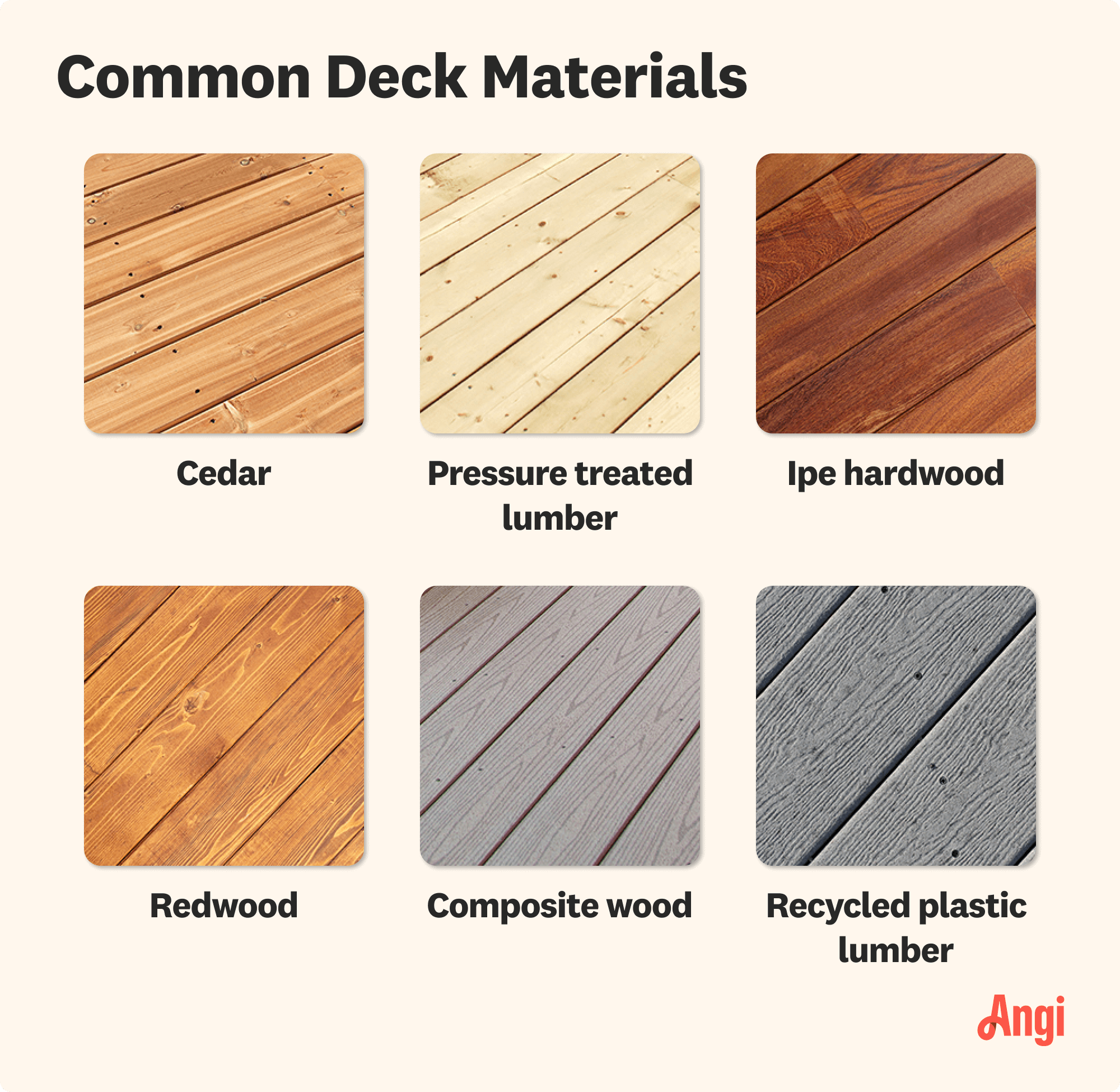
Wood has proven to be most people’s go-to for decking materials. For most, wood yields a lovely end result. It’s easy to cut and, overall, just easy to work with. But a closer look into the wood category will reveal plenty of wood species to choose from.
There’s a lot to consider, from pressure-treated pine, which is easy to find, to redwood, which is less expensive and lasts longer. Here’s a closer look into some specific entries in the wood decking category.
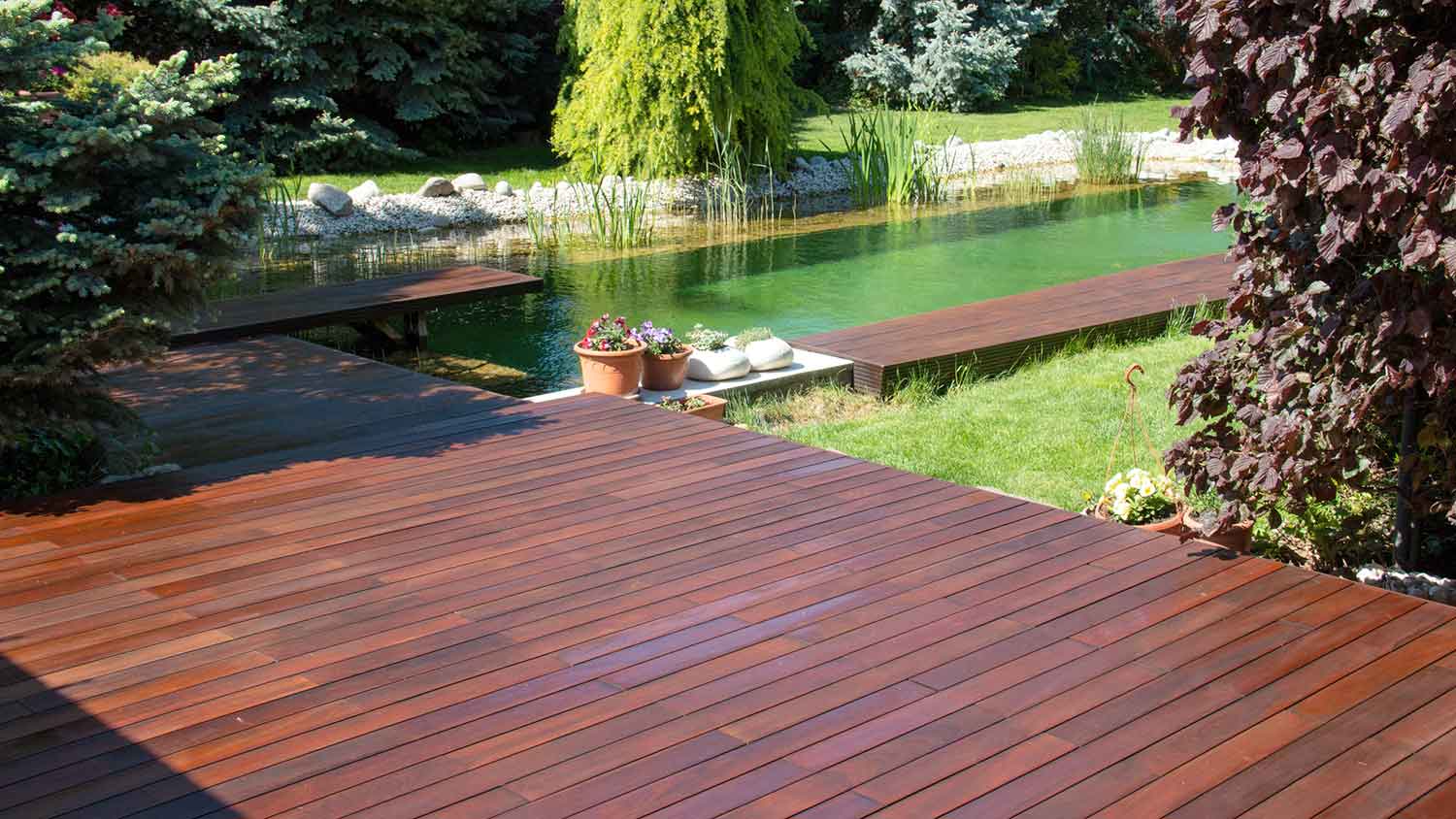
Ipe is a rare tropical hardwood with many features that make it popular for decks. It has one of the longest life spans of any deck material and is highly durable against dings and scratches from regular use as well as pest and rot damage. Ipe’s durability makes it hard to work with, so you’ll want to leave building an ipe wood deck to the pros.
This type of wood comes from vulnerable tree species that may be cleared from rainforests to source the wood, so it’s not a sustainable deck option. Make sure to consult with a knowledgeable deck-building pro near you to find ipe wood with the lowest environmental impact if this is the material you choose. Otherwise, you may want to consider some of the other best materials for decks in this guide.
| Pros | Cons |
|---|---|
| Long life span | Difficult to source |
| Naturally attractive | High-maintenance |
| Extremely durable | Hard to DIY |
Best for:
A long-lasting deck
Humid climates
Improving home value
Ipe wood is naturally resistant to many density things that would otherwise damage a deck, including moisture and pests. Because of its density and durability, you can enjoy an ipe wood deck for many years. Even with heavy use, the deck will still look great as long as you keep up with maintenance.
Another benefit to ipe is its Class A fire rating, which means this type of wood is more resistant to fires. With all of these features, it’s no wonder that ipe wood decks last 30 to 75 years.
Some ipe wood comes from tree species that have recently been listed as endangered by CITES Appendices. Not only does this mean that ipe wood prices could rise significantly and this material will be harder to source, but it also means that it’s not a sustainable decking material.
Additionally, the durability of ipe wood can be as much a con as it is a pro. This wood is difficult to work with, even for DIYers with some experience. If you happen to find an ipe wood material with a lower environmental footprint, you’ll definitely need to hire a local deck builder for the job.
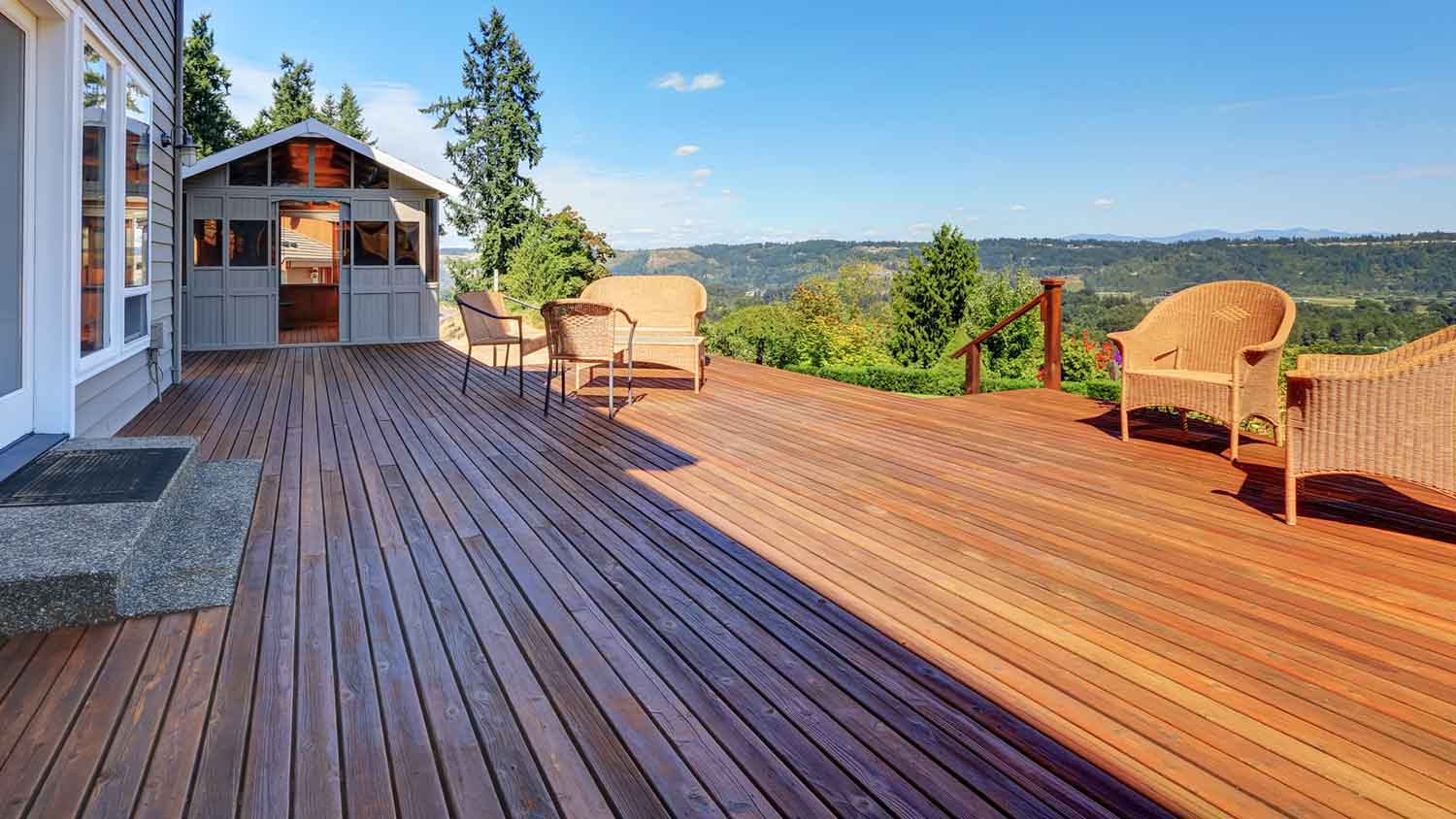
Homeowners love redwood for its durability and beauty. This type of wood is naturally resistant to insects and moisture damage, like rot and mold, but it will last longer with regular cleanings and annual resealing.
Like ipe, redwood is harder to source, and that means it can be a more expensive decking option. This is a protected species, so it may not be a sustainable choice, either. If you opt for redwood decking, make sure to review where the wood comes from to minimize the impact on the environment.
| Pros | Cons |
|---|---|
| Durable | More expensive |
| Rot- and insect-resistant | Harder to find |
| Naturally attractive | High-maintenance |
Best for:
Humid climates
Those with time to maintain the deck
Improving home value
Redwood is another durable wood that’s naturally resistant to mold, rot, and insects. It’s very similar to ipe, especially in its naturally beautiful appearance, even after years of wear. Redwood has a rich red tone that may go darker over time and then soften into a subtle gray-toned wood. Redwood is also one of the best materials for decks because it isn’t likely to warp or split.
Although it’s durable and longer-lasting than some other materials, like pressure-treated pine, redwood may only last about 20 years. It also requires a fair amount of upkeep, including sealing the deck once per year.
Like ipe, redwoods are protected, so sourcing redwood decking may be difficult and pricey. This also makes this a less sustainable choice, so be sure to work with a pro to find a redwood with the lowest impact.
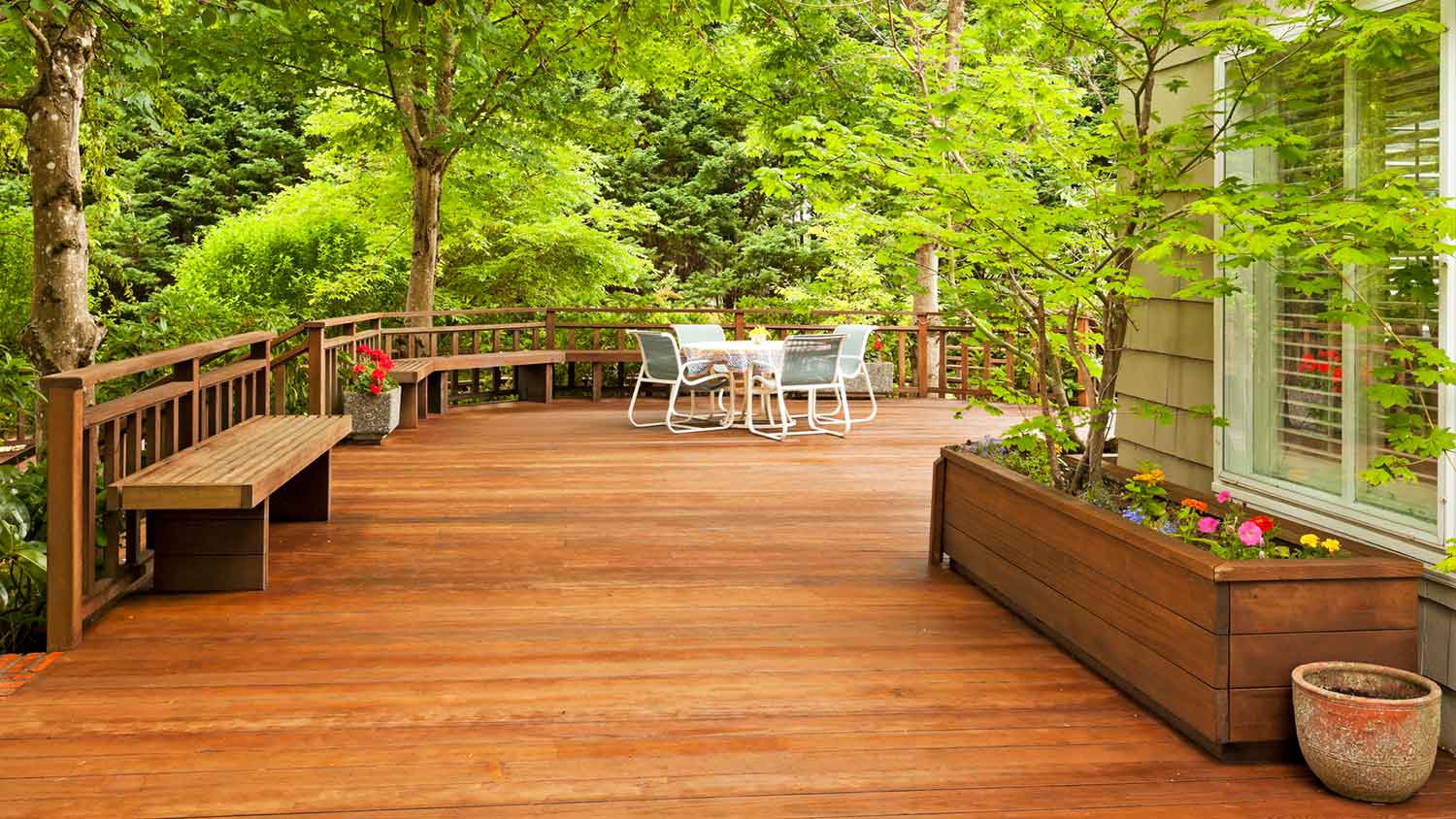
Cedar is one of the best materials for decks that balances durability and appearance. It’s not quite as durable as hardwoods like ipe or redwood, but it will last several years with proper care.
Cedar tends to fade quickly, but fortunately, it’s easy to refinish. This type of wood takes stains and paints well, so you have more customization options, even as it ages.
Keep in mind that cedar has a lot of natural oils that can have a reaction to iron nails, ultimately causing discoloration in the wood. Consult with a deck-building pro to find the best alternative hardware to use with cedar.
| Pros | Cons |
|---|---|
| Durable | Fades quickly |
| Rot- and insect-resistant | Higher cost |
| Customizable | Requires specific hardware or adhesives |
Best for:
All climates
Light or medium use
Homeowners who want to customize the look of their deck
Cedar is a durable wood with natural oils that improve its resistance to pests and moisture. This material is also easier to source than woods with similar properties, like redwood. For people who want more say in the look of their wood deck, cedar is a good choice, too. Because it so easily takes stain or paint, cedar is essentially a blank canvas for creative DIYers.
While cedar is fairly durable, it has a softer surface than ipe or redwood. This means it can scratch and dent more easily, so frequent cookouts and parties on the deck may lead to more wear and tear.
Cedar can fade quickly, so it may need a fresh coat of stain or paint every couple of years. Also, when building or repairing a cedar deck, it’s important to use stainless steel nails and screws or adhesives to avoid discoloration from iron hardware.
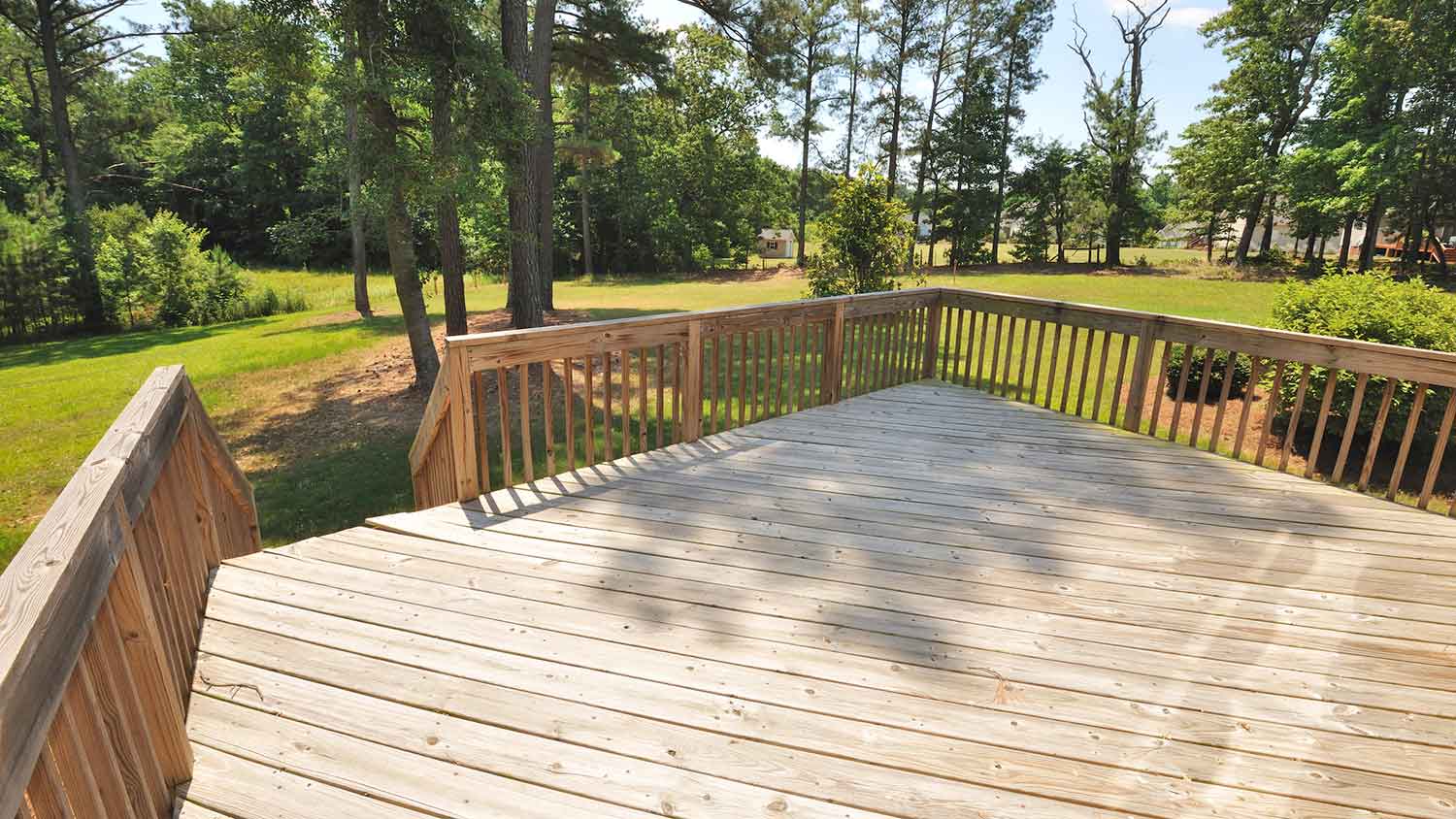
Looking for the quickest deck construction possible? Pressure-treated pine may be the best material for your deck, then. This material comes at a lower cost than other decking options and is easier to source. You can pick up pressure-treated pine at almost any local home improvement store. It’s also fairly durable, thanks to added chemical preservatives that make it stronger against moisture damage and pests.
While this material is easy to customize with stain or paint, eager homeowners will need to wait a few months after constructing the deck before they can successfully paint or stain pressure-treated pine. This material needs plenty of time to dry out before finishing.
| Pros | Cons |
|---|---|
| Low-cost material | Shorter life span |
| Customizable | High-maintenance |
| Easy to DIY | Can warp and split |
Best for:
Mild climates
DIYers
People with more time to handle maintenance
Pressure-treated pine is a good option for people who want a wood deck but are hoping to stick to a tighter budget. It’s also easy to source and simple to work with, even for DIYers. Pressure-treated pine is incredibly versatile. Once it’s had time to dry out, you can stain or paint pressure-treated pine in a variety of colors.
Pressure-treated pine has a shorter life span than other deck materials, only lasting 10 to 15 years on average. However, if you have time to annually refinish the deck, you could squeeze many more years of life from a pressure-treated pine deck before you need to replace it.
This material requires a lot of maintenance to keep it in top shape, and it doesn’t always have the most attractive appearance after construction. Though you can customize it to your liking, you’ll need to wait a few months before applying any paint or stain.
Regular deck maintenance includes sweeping off debris, washing the deck with mild soap, and hosing it down or pressure washing it. Long-term maintenance includes repairing or replacing hardware or boards and always being on the lookout for damage, warping, or cracking/peeling paint.

Some people take pride in giving their deck a new coat of sealant every year, but others may not have the time or money to spend caring for their deck. For families who want a deck they can enjoy without all the maintenance requirements of wood, there are plenty of other options to consider. Some of the best materials for decks that have little care needs include composite decking, PVC, and aluminum.
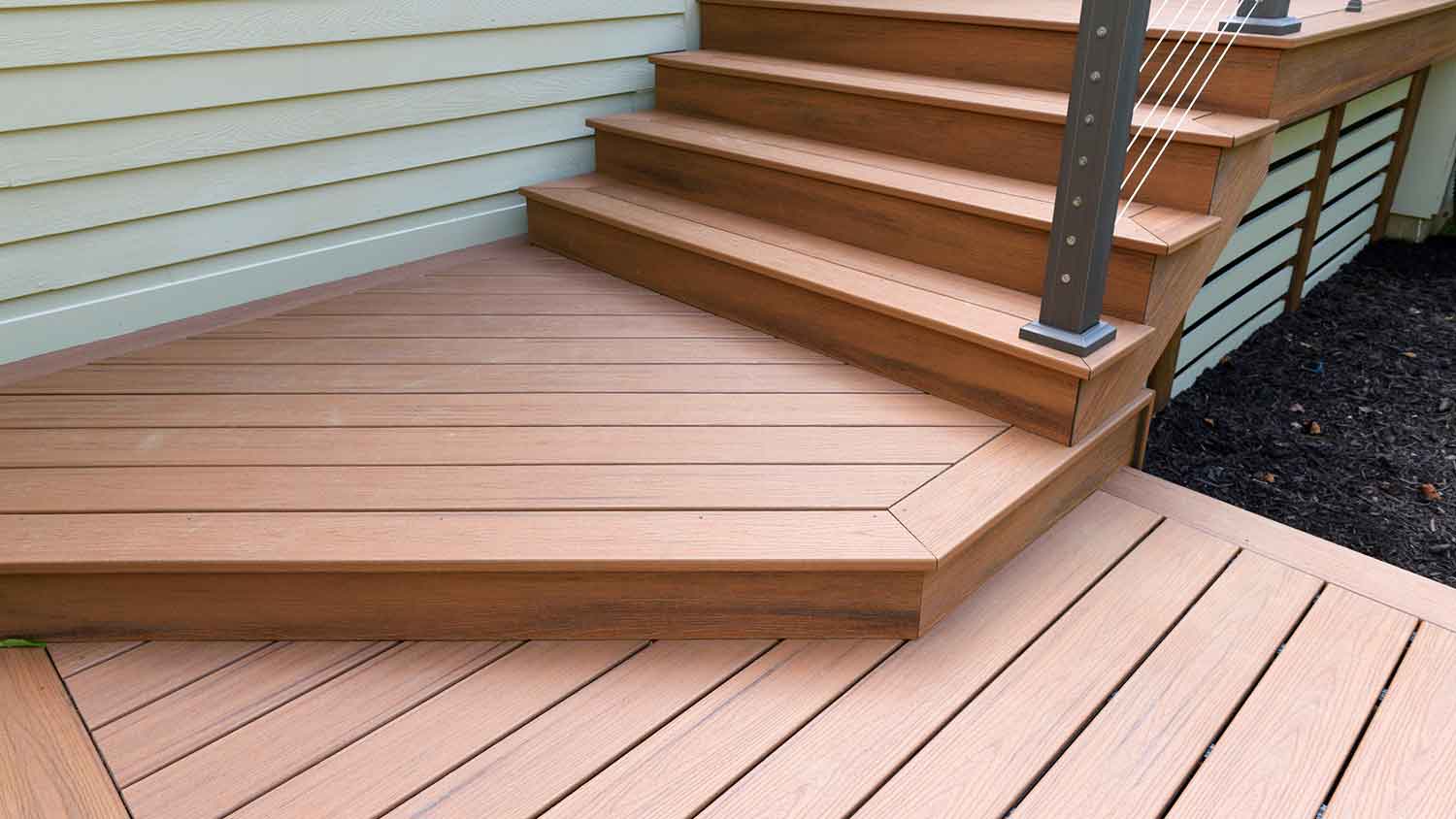
When you want the look of wood without all the upkeep, composite is a good alternative. One of the best materials for decks, composite is made from a mixture of wood fibers, plastic, and additives that bind the materials together. The result is a long-lasting, highly durable material that looks like wood but requires little maintenance.
Composite is popular because it’s resistant to water damage and pesky insects, making it especially appealing for pool decks. But because it’s designed for durability and longevity, you can expect composite decking to cost more than wood decking.
| Pros | Cons |
|---|---|
| Works in all climates | Higher cost |
| Water-resistant | Less customizable |
| Insect-resistant | Can fade |
Best for:
All climates
Sunny areas
Busy families with little time for maintenance
If you don’t want to take a weekend off every year to reseal your deck, composite may be right for you. Compared to wood, composite requires little TLC. Sure, you’ll want to sweep it off every couple of weeks and pressure wash it once or twice per year, but otherwise, this material is easy to care for.
Because composite is so durable, this material is great for all types of climates. It’s not likely to crack, split, warp, or rot, making it a good choice in sunny, rainy, and humid locations.
Composite comes in many colors and styles, but it isn’t as customizable as wood. Most people will still be able to find an option that’s right for their backyard with composite, but some people may prefer the look and versatility of real wood. Composite can be painted if the color fades, but it can’t take stain.
Another drawback of composite is its cost, which is higher upfront compared to wood decking. Regular pressure-washing will also add to the maintenance cost, but you could save more money over time since composite doesn’t need resealing.
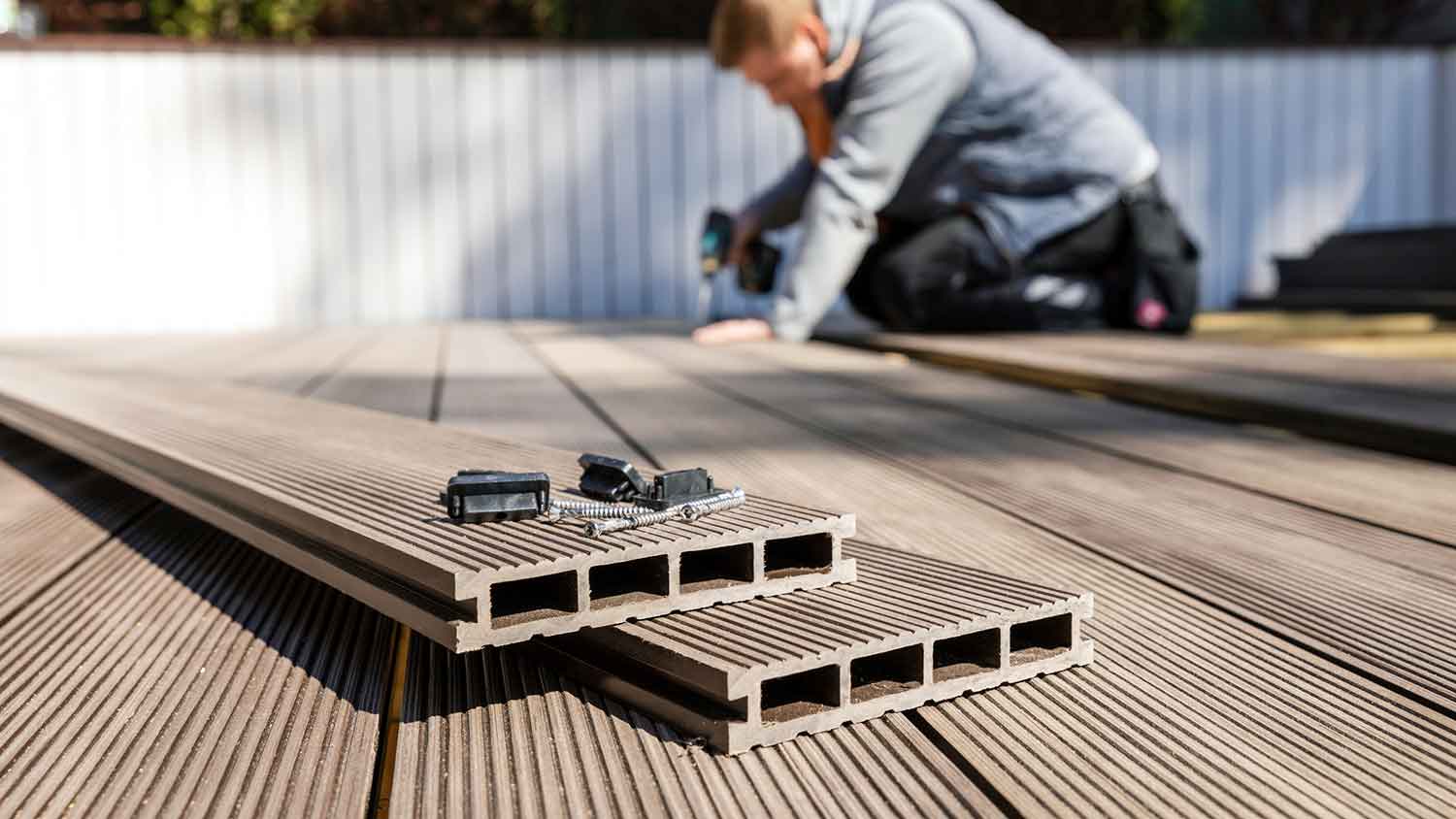
Synthetic decking is made from a durable plastic polymer called polyvinyl chloride (PVC), and it doesn’t incorporate wood fibers like composite does. PVC decking is recyclable. It lasts around 20 to 30 years at least, so it’ll be a long time before you have to start finding where to recycle this material.
PVC stands up well to wear and tear, especially if you have kids and pets that spend a lot of time outside. This durable but low-maintenance material also resists fading and water damage.
People in warm climates may want to consider other materials, though, because PVC can absorb a lot of heat. Still, for its durability and minimal maintenance needs, synthetic decking is one of the best materials for decks.
| Pros | Cons |
|---|---|
| Low-maintenance | Absorbs heat |
| Fade-resistant | Artificial look |
| Long-lasting | Bouncy feel |
Best for:
Mild or cooler climates
Homes with kids or pets
Busy families with little time for maintenance
Few deck materials can boast resistance to fading like PVC decking can. If you don’t want to spend time restaining or repainting your deck every few years, PVC might be the best deck material for your home.
PVC also lasts a long time, a few decades or more, all while requiring little maintenance. This also means that people with a synthetic deck can spend less on maintenance costs over the life of the deck.
PVC is lightweight, making it easier to work with, but this can also mean that a PVC deck may feel more bouncy when you’re walking on it. The deck will be safe to walk on, and it won’t feel like you’re on a trampoline, but it won’t feel quite as solid and steady as composite or wood.
This material can also absorb heat, making it feel hot if it’s been under the sunshine all day. Another downside to PVC is that, although there are plenty of colors and textures to choose from with this material, it won’t look like real wood.

Aluminum decking is gaining popularity as one of the best materials for decks because it’s sustainable, durable, and resistant to moisture damage, pests, and even fire. Aluminum decks feature an anti-slip finish, too, so there’s no need to worry about walking along a slick metal surface.
Aluminum is a good option for humid or rainy locations where moisture could damage other materials, like wood. Plus, this material is incredibly easy to care for while offering a long life span.
| Pros | Cons |
|---|---|
| Water resistance | Absorbs heat |
| Anti-slip finish | Less customization |
| Low-maintenance | Higher cost |
Best for:
Shady areas
Rainy locations
Busy families with little time for maintenance
Aluminum is one of the easiest deck materials to care for since it’s resistant to rot, mold growth, and insect damage. Just sweep the deck and spray it off from time to time, and your aluminum deck will always look good.
People may be worried about slipping on a metal deck after a rainy day, but aluminum deck materials are anti-slip, so you can walk on a wet aluminum deck without fear of falling.
When the afternoon sun beats down on your aluminum deck, you’ll need to wear shoes before stepping outside. Aluminum heats up quickly, which could hurt if you or your family members, including your pets, touch the deck with bare feet (or paws) after it’s been absorbing heat.
Another drawback of aluminum is that it can be more limited in style options than wood or composite deck materials. It can also be more difficult to source, so when you do find aluminum decking near you, the already-limited options may be even fewer.

By now you’re practically an expert in the different types of decking materials, but how do they compare? Below you’ll find the best decking materials by key categories to help you decide which option is best for your project.
If you live in a wet climate, you’ll want to choose a decking material that withstands rain and humidity. Aluminum is a solid choice for water resistance no matter the temperature of your region because it won’t expand and contract. While synthetic PVC is also water-resistant, this material may be more slippery than aluminum, which often has anti-slip features.
Ipe wood is the longest-lasting decking material thanks to its density. Your ipe wood deck could last up to 75 years. In comparison, pressure-treated wood may only last up to 15 years.
Depending on the type of wood you choose, wood decking is arguably the best quality decking material. Cedar wood in particular is naturally resistant to mold, rot, insects, warping, and cracking. Most of the other options are industrially-made products, making them less natural and more likely to contain synthetic materials that impact the quality of the product—even if they’re longer lasting.
There’s a reason why wood decking withstands the tests of time despite having an overall lower life span compared to other materials. If you’re after a vibrant deck full of style and a variety of stain options, wood decking is your go-to decking material. Most other materials lack the customizable features you can get with wood, so you might have to decide if aesthetics is more important than durability and maintenance for this one.
You can install composite decking in rainy or sunny weather without worrying about warpage. The material is water-resistant and won’t mold or become infested with insects, making it an ideal choice for all sorts of climates. Composite decking also won’t overheat in scorching weather.
Aluminum decking is the clear winner for a low-maintenance deck. You don’t have to deal with rot as you would with wood decking. While composite decking is a close runner-up, aluminum decking takes the cake because it doesn’t need to be replaced as frequently.
Decks that receive full sunlight need a composite decking material for the longest-lasting, heat-resistant deck. You’ll want to avoid wood and synthetic plastics, as they absorb heat and are susceptible to warpage. Aluminum won’t warp, but it heats up fast in the sun and also cools down quickly.
Synthetic decking is the most durable decking material. While ipe decking technically has the longest life span, you’ll need to regularly seal it to maintain that life span. On the contrary, synthetic decking is durable without those extra measures, making it the top contender.
Again, ipe wood is the strongest board material on the market—so strong, in fact, that you might need a pro to drill the holes to install this material for your deck.
From the list, composite decking is the best choice for pools. Keep in mind, however, that most homeowners choose stamped concrete or pavers for pool decking materials. Natural stone pavers are a much better choice for a slip-resistant and chemical-resistant deck—features you’ll want to consider for decks close to pools.
On average, homeowners can expect their decking building costs to average around $8,240, with most projects falling between $4,340 and $12,600. Your final total depends on everything from the type of decking material you choose to whether your deck is ground-level or a second-story stunner, which can more than double your costs due to added framing and support.
Remember, while premium materials and custom features like built-in seating or lighting will raise the bill, they may also boost your home’s value. A tricked-out and beautifully maintained deck can offer a return on investment between 40% and 52%. Just be aware that a new deck can also boost your property taxes and insurance, so it’s smart to budget beyond the build.
While building a deck yourself might seem like a satisfying weekend project, hiring a pro is often the smarter and safer move. Professional deck builders are up-to-date on local building codes, zoning regulations, and permitting requirements that can quickly trip up even the most seasoned DIYer.
Beyond compliance, pros bring the experience needed to ensure proper structural support, drainage, and material installation, which affect not only your deck’s durability but also your home’s resale value. Leaving it to the experts will save you time, stress, and potential costly do-overs unless you're confident with carpentry, permits, and precision cuts.
From average costs to expert advice, get all the answers you need to get your job done.

A porch can expand your living space and add curb appeal. Find out what to budget for the cost of a porch on your home with this guide.

Thinking of adding a pergola to your backyard space? Find out motorized pergola costs by size, material, and add-on features with this guide.

From patios and gazebos to full-on structures, your outdoor space is a blank slate. Learn how much it costs to build and furnish an outdoor room.

Dreaming of a new outdoor entertaining space? Learn how a concrete patio can increase home value and pay for itself if you’re thinking of selling soon.
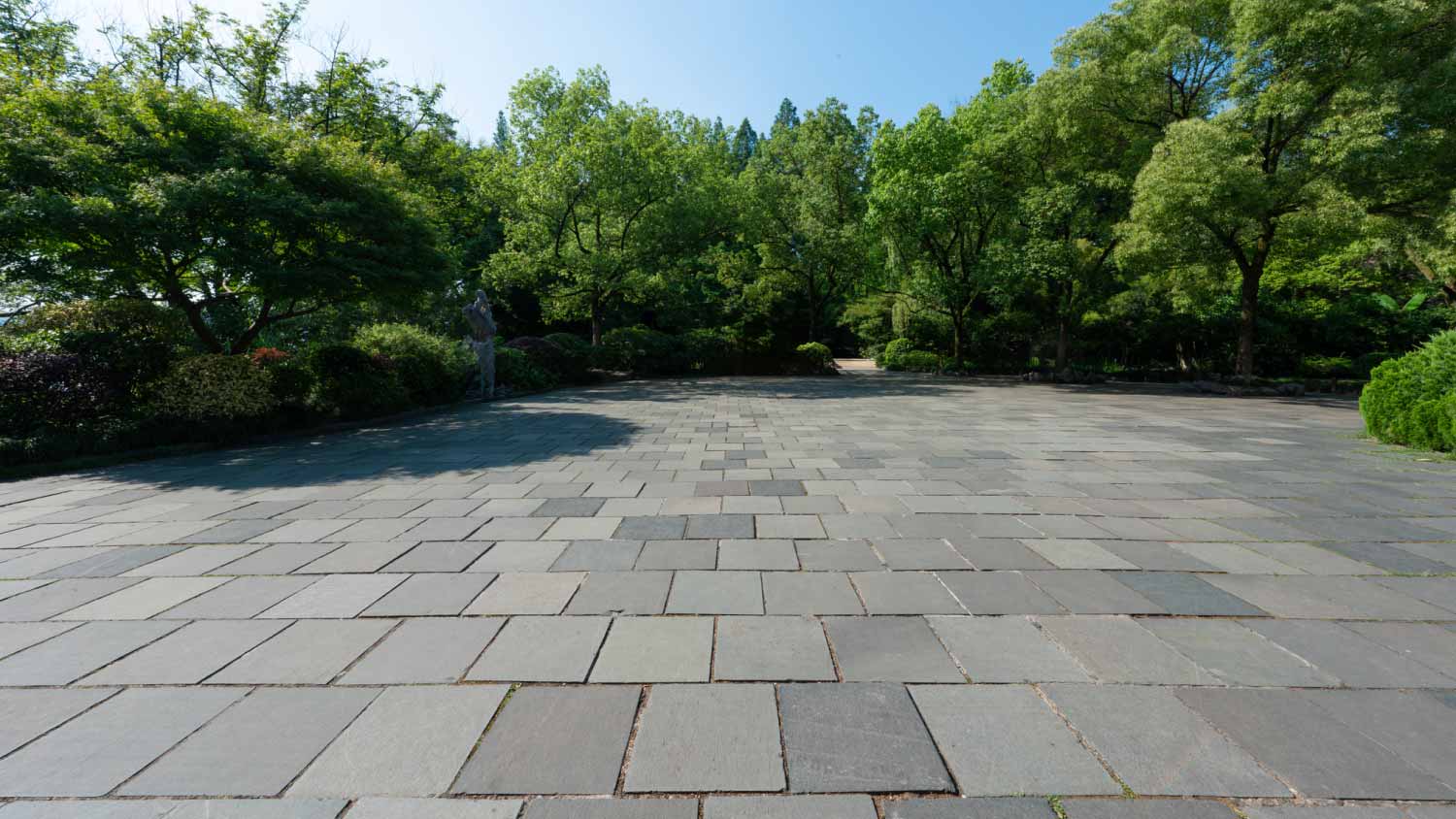
Bluestone patios can transform yards, increase home values, and extend your usable space. Learn about average bluestone patio costs to budget for the project.

Concrete is ideal for an outdoor patio, walkway, or steps. Here are the questions to ask a contractor about your next concrete installation project.